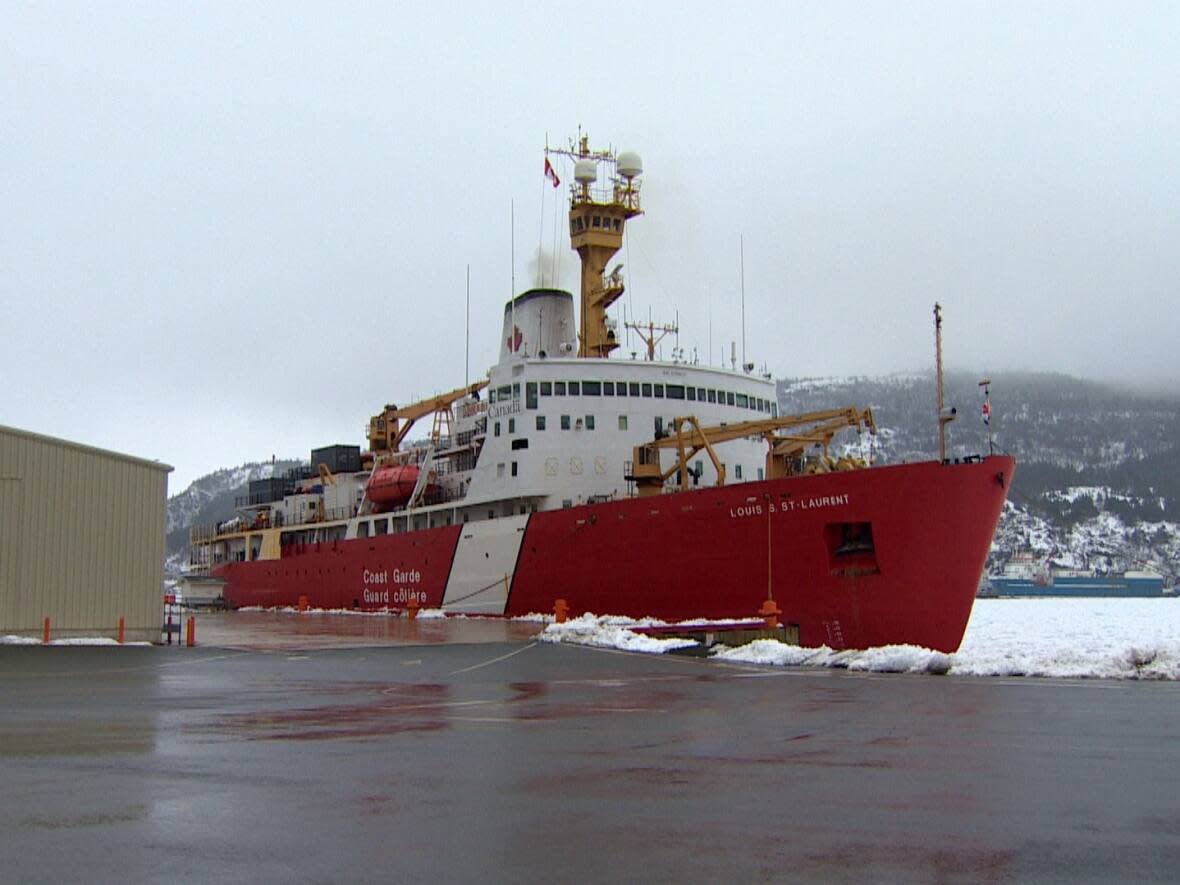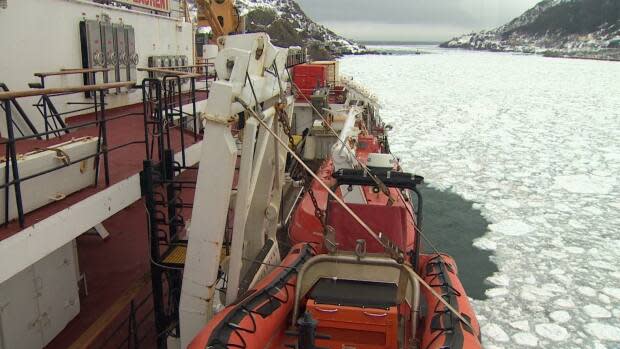What it's like to sail through sea ice on Canada's largest icebreaker ship

Windross Banton, who has spent decades sailing the Atlantic Ocean says the layer of sea ice that floated into St. John's harbour last week is an uncommon sight — and one that could become more unusual in the future.
"Over the last 30 plus years that I've been at it, I've only seen it happen once or twice," said Banton, the commanding officer of the Louis S. St-Laurent, the Canadian Coast Guard's largest icebreaker.
Sheets of sea ice moved into the St. John's harbour last Tuesday night into Wednesday morning, fuelled by an east-southeasterly wind, drawing onlookers to the harbour to marvel at the unique sight.
The coast guard says last week was the first time icebreaker vessels had to work in the Narrows since 2017, and Banton, who has been with the coast guard since 1986, says the last time he saw this much sea ice was in 2008 or 2009.
It's difficult to predict whether it will occur again, said Banton, but due to changing temperatures as a result of climate change, it could become even more uncommon.
"There certainly seems to be less ice," said Banton, aboard the Louis S. St-Laurent. He attributed the increased ice to a recent cold snap. "The ice grew fairly rapidly, but some years you hardly see any ice. Generally, I think the ice growth is declining from one year to the next."

Louis S. St-Laurent
But when sheets of ice do float into the harbour, the coast guard calls in the big gun — the Louis S. St-Laurent.
The heavy icebreaker, the largest of its kind in the Canadian Coast Guard's fleet, is equipped with five engines and the capacity to generate around 27,000 horsepower, said Banton.
On Friday, it was tasked with breaking down sheets of ice to clear a path for other ships to travel to and from the harbour.
"We use the icebreaker almost like a snowplow clears the roads," said Trevor Hodgson, regional director of operations for the coast guard's Atlantic region.
"We clear a path in front of the commercial ships so they can kind of follow behind us easily, get where they need to go, and help keep things moving."
The boat has travelled to the North Pole at least three times, said Banton. Hodgson says it helps move marine traffic through Canadian waters, and in the summer, the boat also delivers cargo to communities in Canada's Arctic to help keep them sustained through the winter.
So far, ice has been no match for the massive ship. Hodgson says the Louis S. St-Laurent has never been stuck in ice for long. Arctic pack ice is usually no deeper than three to five metres, he said, but what's most concerning to the coast guard is a process called ridging.

Hodgson says ridging is when ice fragments get pushed together by wind and sea conditions, forming a thick ridge very high above sea level or very deep below the surface.
"Usually it's in a smaller kind of area that we just have to crack through it or sometimes it makes more sense just to find an easier route and go around," said Hodgson.
The ice that moved into the harbour last week likely came from Labrador's coast, he said — during the long journey from Labrador to St. John's, Hodgson says the ice was broken up into smaller, more manageable chunks.
By the weekend, the sea ice had cleared the harbour.
"It is dangerous, just about everything we do," said Banton.
"In particular when you're working with the larger ships and trying to do ice breaking, whether you're … coming into a small harbour and trying to do a harbour breakout, it is very dangerous work. And it's, it's always in the back of your mind."


